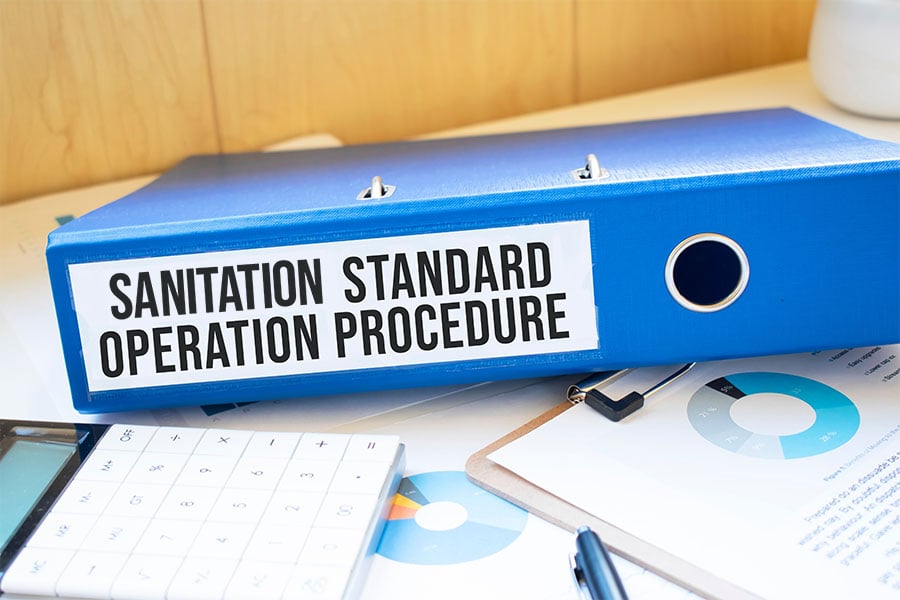Understanding monitoring, verification and validation, and their functions is crucial to properly incorporating scientifically-validated SSOP’s into a sanitation program. The cleaning process must be consistent and provide successful results to minimize food safety risks.
Monitoring
Monitoring normally relies on visual observations and inspections to ensure that the SSOP is followed. This is also an opportunity to address non-conformance issues including corrective action(s).
Verification
Verification provides confirmation on whether a control measure put in place is functioning as intended. Associated activities may include visual observations, records review, and environmental testing.
Validation
Validation provides documented evidence that a properly implemented control measure is capable of controlling an identified hazard. Validation includes visual observation during the cleaning process, as well as any number of analytical testing methods, including ATP, protein residues, or general microbial indicator organisms. If results are satisfactory, the cleaning procedure is validated.
Determining Necessity
A risk analysis should be conducted in all areas of the facility to determine if cleaning minimizes the opportunity for a food safety risk to occur, requiring validation. The following should be considered to determine risk and whether or not validation is necessary.
- Does cleaning minimize an identified food safety risk?
- Does contamination of the product create a microbial load that a validated lethality step does not reduce or address to a safe acceptable level?
- Would foreign material or product accumulations create a food safety risk?
All cleaning processes should have an associated SSOP, some of which may not require validation.
Sanitary Design Challenges
Sanitary design plays an important role in whether the equipment is capable of being adequately cleaned and should be taken into consideration. Additionally, the area where the equipment resides is as important as what is being cleaned. Equipment that is poorly hygienically designed or located in a poorly designed area may pose a challenge to long-term success.
Establishing a Standard
One person’s expectation of clean can vary widely to the next person. In order to remove any confusion, it is important to establish cleaning criteria standards. At minimum, a visual observation should be used as pass/fail. Additionally, most establishments rely on a combination of tools to verify cleaning effectiveness including:
- ATP
- Protein Residue
- Allergens
- Microbiological Organisms
Re-Validation
Re-Validation must be conducted when there is a significant process change, or a failure occurs during validation. Some examples may include:
- Formula Changes
- Extended Production Runs
- Reduced Cleaning Scheduling
- Equipment Modifications/Additions
- Trending Monitoring Failures
- Cleaning Chemistry Changes
- SSOP Revisions
Annual Verification
An annual verification of validated cleaning processes should be performed and documented to ensure the preventive control is still working as designed.
Keep in mind, validation of the SSOP is conducted to ensure the procedure generates results that can be replicated. Verification includes a review of associated records to determine whether the procedure is working and consistently generates successful results. Some examples include:
- Pre-op inspection records
- Environmental pathogen monitoring data
Conclusion
Cleaning activities must incorporate a level of consistency to be successful and mitigate unnecessary risk. A check and balance approach will ensure that the process is working as it should, providing it has been properly vetted and is being carried out as designed.

